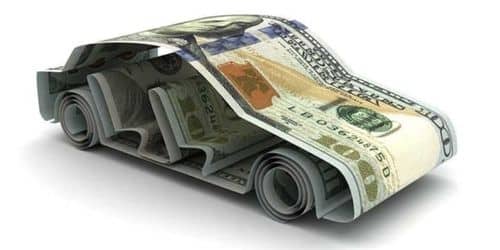One such ridesharing startup that rocked the industry in 2009 is Uber, a growing commercial giant. Uber earns money by charging fees on gross reservations on the platform. Uber made approximately $17.4 billion in revenue in 2021, with the majority coming from mobility ($6.95 billion, or 39.8% of total revenues) and delivery via Uber Eats ($8.36 billion, or 47.9% of total revenues). If you’ve ever wondered how Uber works and, more crucially, how it makes money without you tipping or with costs that are typically lower than taxis, keep reading to decipher Uber Business Model – a taxi aggregator.
What Is Uber?
Uber is a smartphone app-based on-demand cab aggregator that lets you book a cab from point A to point B, pre-calculating the charge, estimating the arrival time, and offering the option to divide the cost with co-riders, all with a few taps on the app.
When the founders couldn’t find a cab on a frigid winter evening in 2008, they decided to disrupt the whole cab industry. Everything began with a simple question: “What if you could request a taxi from your phone?”
Today, the firm is projected to have more than 100 million monthly active users worldwide, is a unicorn valued at $60 billion, and offers transportation options ranging from inexpensive bikes and scooters to Uber Air.
- UberX: The most basic Uber ride.
- Uber Pool: Rides that are shared.
- Uber Comfort: New vehicles with more legroom.
- Bikes: Electric bikes that are available on demand.
- Uber Green: Electric vehicles.
- Uber Black: High-end vehicles.
- Scooters: These are electric scooters.
- Uber Transit: Provides real-time public transportation information.
- Uber WAV: These are wheelchair-accessible vehicles.
- UberXL: Vehicles that can transport up to 6 people.
- Uber Lux: High-end vehicles with highly-rated drivers.
- UberBlack SUV: Luxury SUVs are driven by highly-rated drivers.
- Uber Taxi: Uber has teamed with local taxicabs.
- UberFlash: A dedicated cab system explicitly created for Hong Kong.
- Uber Auto: Auto rickshaws on demand.
- Uber Air: Vehicles that fly.
Uber’s Founding History
Garrett Camp, a technologist and co-founder of StumbleUpon, and Travis Kalanick, who had sold his Red Swoosh firm for $19 million in 2007, established Uber in 2009 as UberCab.
When the Uber was founded in 2009, the founders invested $200,000 in starting money. Uber raised $1.25 million from investors in 2010, and by the end of 2011, the company had raised $44.5 million in total capital. The company has received more than US$23 billion in private venture capital.
Uber has grown exponentially in the last decade, from a simple notion in the minds of Travis Kalanick and Garrett Camp to a multi-billion dollar global taxi app development solution, as seen by its revenue growth in recent years.
How Does Uber Make Money?
Uber primarily makes money by charging drivers commissions on trips booked through Uber’s network. The commission is 20% of the trip earnings, with the remaining 80% going to the driver.
Uber has a dynamic pricing approach in which the level of demand and the number of available drivers determine the trip price. When the availability of drivers increases, the pricing algorithm normalizes the prices. Uber business model is divided into four categories in which it operates and makes money: Mobility, Delivery, Freight, and Advanced Technology.
#1. Adaptability:
The product connects the rider to the ride and provides drivers with various vehicles, such as different sectors of cars, auto-rickshaws, motorbikes, vans, and taxis. Uber for Business (U4B), financial collaborations, transit, and car solutions are also included in this section. Uber made $6.09 billion in the segment in 2020, a 40% decrease yearly because of the pandemic.
- UberGO/X/XL/WAV: It is a ride-hailing service that connects the rider to the driver and provides affordable private journeys. The offer is classified based on the sorts of vehicles offered. Hence the cost of each ride varies depending on the type of vehicle. UberGO offers simple variations of cars to make the cost of travel. UberX provides ordinary, economy-class automobiles that can accommodate four passengers. UberXL, on the other hand, differs in terms of vehicle size to accommodate a maximum of six people or more perfect luggage space at an affordable price. The vehicle is wheelchair accessible, thanks to WAV.
- Renting an Uber: Rent a car for as many hours as the user need, from one hour to twelve hours, with the option of adding or eliminating required stops. This service is aimed at the Persona who wants to use it to go to many locations by reserving a car for a set amount of hours at a low cost.
Read Also: UBER REQUIREMENTS: Uber Drivers Requirements
- Uber Pool: The most cost-effective way to travel is to board an Uber service car with other passengers. So, using this service, a rider agrees to have the driver pick up other riders and transport them to their destination while leaving the rider off at the designated spot. As the cost of the ride is shared among other passengers, the cost of the ride is reduced to the lowest compared to other services.
- Uber Green: This is aimed at people who want to lessen their carbon footprint. It offers hybrid or electric automobiles for hailing at a higher cost than UberX.
- Uber Transit: Allows users to access multi-mode transportation. Users can obtain information on various kinds of transportation, including public transportation, to reach their location. With this, Uber hopes to present itself as a one-stop travel service to provide users with optimized travel options.
#2. Delivery Segment:
The delivery service allows users to search for nearby restaurants, order meals, and either pick them up or have them delivered. With this offer, Uber has expanded its service beyond mobility and allowed drivers to make extra money during non-peak mobility hours.
The delivery option also gets drivers into the platform who are not mobility drivers or do not have access to approved mobility cars. With this, a new ecosystem of players has been added to the platform, leveraging the site’s current power and capabilities of connecting people needing item movement, thereby generating revenue.
Uber made $3.9 billion in the segment in 2020, a 55% increase yearly due to the increase in food orders during the epidemic.
#3. Freight:
Because of the low entry barrier, the freight industry is severely fragmented, resulting in even more turmoil. Shippers must spend hours or days locating a truck and driver for shipping, with most negotiations taking place over the phone. It is also difficult for carriers to identify a shipper who fits their needs and negotiate a fair price. This eventually leads to more non-revenue and “dead-head” mileage.
The platform provides freight offerings from Uber, carriers, and shippers. Carriers receive upfront pricing and the opportunity to complete a shipment at the push of a button.
According to Uber CEO Travis Kalanick, the company’s overall goal is to be a one-stop shop for all mobility as a service through developing a shared economy. Charlie Rose is interviewed. In 2020, Uber made slightly more than $1 billion in the segment.
#4. Advanced Technology Group (ATG):
Uber’s R&D division is in charge of developing an autonomous car and ridesharing technologies. However, Uber sold its ambitious Autonomous Driving division to Aurora. Uber Elevate, formerly Uber Air, was sold to Joby Aviation as an “Urban aviation ridesharing product” to alleviate traffic congestion on the ground. Thus,Uber made $100 million in ATG and other technology programs in 2020.
Uber earned $11.1 billion in total in 2020, an almost 20% decrease from 2019.
What are New Ways Uber Make Money?
#1. UberEats
Customers can order from their favorite restaurants online using on-demand meal delivery applications like Uber Eats. Uber’s delivery partners deliver the food to the customer’s door. These delivery partners use their app to deliver items as quickly as possible. This has also proven to be advantageous to restaurants. They can increase their visibility and raise their profiles on their web platform. Uber Eats generates money from three sources:
- Advertising revenue from Restaurant Partners.
- Customer Delivery Charge
- Revenue Splits with Restaurant Partners
#2. UberFreight
Uber Freight is a transportation platform for businesses. It offers its consumers a straightforward approach to handling their transportation items. It is a free app that allows shippers to book whatever goods they want to ship by pressing a button.
Why and How Did Uber’s Business Become So Successful?
Uber’s approach has been first to acquire popularity and a client base in major cities and metropolises, which has been one of the main reasons for its success. Another factor is the rapid increase in smartphone users worldwide. People are growing more smartphone aware, and they require more accessible methods for day-to-day needs, such as city rides. Uber arrived at the right time, detecting the appropriate demand in a changing world.
Uber’s Business Model Advantages
#1. Brand Value
Uber is a globally recognized brand with a presence in over 50 countries. Uber is predicted to grow substantially in the future, thanks to the growing internet and emerging technology. It is currently valued at more than $68 billion. A high market valuation also draws new investors.
#2. Low Initial Fixed Investment
As an aggregator, Uber does not require a significant fixed investment, making it easier for Uber to expand its network. It has grown swiftly since no fixed investment or infrastructure is required.
#3. Concentrate on Customer Satisfaction
Customer happiness has always been a top priority for Uber. Uber has recognized that it operates in an utterly customer-driven market with increasing competition. It must improve customer happiness and user experience to maintain a competitive advantage.
#4. Dynamic Pricing Methodology
Uber has implemented a dynamic pricing strategy based on the demand-supply economic theory. The higher the price, the bigger the demand. This is extremely helpful to both the firm and the drivers. Uber drivers make a decent living at peak hours as well as at money.
#5. Adaptive
Uber is also well-known for its ability to adapt to changing business situations. Uber faces a variety of issues in various locations as a result of its international exposure. It has been able to adapt to new markets because of intelligent marketing methods.
What is the Potential for Future Growth of Uber?
Because Uber currently does not own any taxis, it can show a more significant percentage of its earnings as profits. The initial reinvestment will be minor but sufficient to slow future earnings. Uber has a lot of room to grow; it already serves 200 cities in 55 countries and plans to expand to dozens more in the next year. Uber is a highly profitable firm, with revenues doubling every six months. It has considerably more chances for growth than most Fortune 500 organizations.
What Can/Should Entrepreneurs Learn From Uber’s Business Model?
- When launching a new firm, one must expect criticism and lawsuits for disturbing other enterprises, but this should not deter growth.
- In most circumstances, having inventory is a liability, and the Uber business model greatly relieves this aspect.
- Maximum utilization of new technology and the internet for business expansion.
- Provide a quick and efficient service while charging at least 15% commission on all transactions.
- Use the economy to your advantage and strive to acquire prospective global markets.
- There is no such thing as negative publicity, and Uber’s repeated court appearances aided the company’s growth.
Who are Uber’s Competitors?
Other ridesharing firms, freight forwarders, and food delivery services compete with Uber. The following companies are among its main competitors.
- Lyft \sCurb
- DidiChuxing
- Grab
- Ola Taxis
- Local taxi companies, such as Yellow Cab in New York City
Conclusion
Uber has changed cab booking services and provided a swift and convenient way to commute since its beginnings. It began with the most essential product offering and worked its way up the ladder, from ride-booking to premium luxury rides, different economies, and services like Uber Eats. Uber did not become Uber overnight. Uber has gradually risen to the top of the online cab ride business thanks to data-driven judgments and somewhat risky trials.
- UBER LOGO: The Success Story of The Uber
- HOW DOES AMAZON MAKE MONEY? The Unique Business Strategy
- HOW DOES SNAPCHAT MAKE MONEY: The Business Model
- UBER WORTH: Is Driving for Uber Worth It?
- UBER REQUIREMENTS: Uber Drivers Requirements






